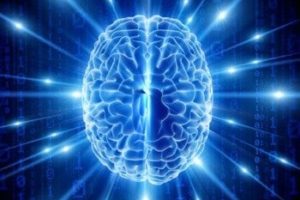national institute of neurological disorders and stroke
From touchpad to thought-pad?
Move over, touchpad screens: New research funded in part by the National Institutes of Health shows that it is possible to manipulate complex visual images on a computer screen using only the mind.
The study, published in Nature, found that when …
Rochester leads international effort to improve muscular dystrophy treatment
A large international study aimed at improving the care of muscular dystrophy patients worldwide is being launched by physicians, physical therapists, and researchers at the University of Rochester Medical Center.
Neurologist Robert “Berch” Griggs…
Researchers Combine Dietary Supplement, Antibiotic to Treat Lou Gehrig's disease
A new study shows that combining the supplement creatine and the antibiotic minocycline significantly slows disease progression and prolongs survival in a mouse model of amyotrophic lateral sclerosis (ALS), or Lou Gehrig’s disease. The combined treatment was significantly more effective than either compound administered alone. Both creatine and minocycline have previously been shown to improve outcomes in a mouse model of this disabling neurological disease, but this study is the first to test a combination of the two.
Study Links Chronic Pain to Signals in the Brain
For centuries, doctors have tried to find effective ways to treat chronic pain, a devastating neurological disorder that affects almost 90 million Americans. A new study shows that two proteins in the brain trigger the neuronal changes that amplify and sustain this type of pain. The finding may lead to new ways of treating chronic pain. “This is the first [chronic pain] study to show clear molecular targets in the brain,” says Min Zhuo, Ph.D., of Washington University in St. Louis, Missouri, senior author of the report. “Drugs that inhibit these two proteins may help to reduce chronic pain.”
Possible New Treatment Strategy for Deadly Brain Tumors
Despite advances in neurosurgery and radiation techniques, the prognosis for patients with intracranial glioma remains devastating. Now, researchers have identified a possible new treatment strategy for this common type of malignant brain tumor. Two studies funded in part by the National Institute of Neurological Disorders and Stroke (NINDS) show that, in a mouse model, neural stem cells (NSCs) can be used to deliver therapeutic agents capable of killing glioma cells and their migrating tumor cells.
Study Identifies Gene That Prevents Nerve Cell Death
Many neurological diseases occur when specific groups of neurons die because of nerve damage, toxins, inflammation, or other factors. A new study suggests that activity of a single gene can stop neurons from dying regardless of what triggers this process. The findings could lead to new ways of treating neurodegenerative diseases.



